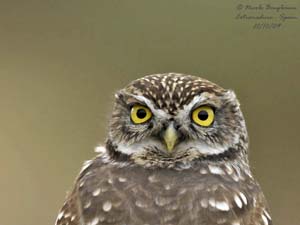
The different bills’shapes - Page 6
Show me your bill, I will know what you eat!
Photographers:
Bob Moul
Nature Photography
Callie de Wet
GALLERY
Steve Garvie
RAINBIRDER Photo galleries
Tom Merigan
Tom Merigan Photo galleries
Maxime Dechelle
LEPAPARRAZO
Tom Grey
Tom Grey's Bird Pictures
Nicole Bouglouan
PHOTOGRAPHIC RAMBLE
Text by Nicole Bouglouan
Sources:
HANDBOOK OF THE BIRDS OF THE WORLD Vol 5 by Josep del Hoyo-Andrew Elliott-Jordi Sargatal - Lynx Edicions - ISBN: 8487334253
HANDBOOK OF THE BIRDS OF THE WORLD Vol 2 by Josep del Hoyo-Andrew Elliot-Jordi Sargatal - Lynx Edicions - ISBN: 8487334156
L’ENCYCLOPEDIE MONDIALE DES OISEAUX - Dr Christopher M. Perrins - BORDAS - ISBN: 2040185607
See the article: Description of the bird and its plumage
The most part of the owls’ species often are nocturnal.
They have small hooked bill, heavily surrounded by rictal bristles. As these birds hunt by night and in the darkness, these stiff feathers help them to detect the preys.

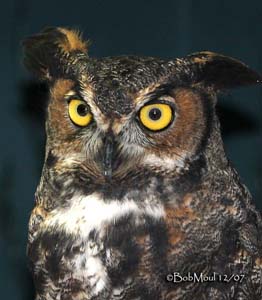
Bubo virginianus
Athene noctua
The bill is relatively slender, short and well hooked at tip.
They catch the preys with the talons, and they eat them with the bill, tearing up pieces of flesh while they hold it with the talons.
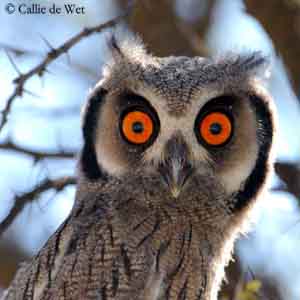
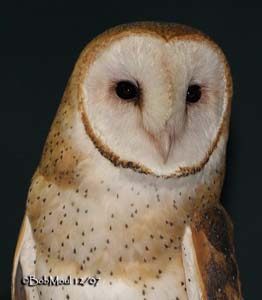
Southern White-faced Scops-Owl
Ptilopsis granti
Tyto alba
Tytonidae and Strigidae feed in the same way, and have the same type of bill.
Diurnal raptors or birds of prey have robust and hooked bills. All have the same type of bill, more or less large or broad according to the species.
Some of them kill the prey with the talons, or only one toe after catching it. Others kill the prey with the bill. But all hunt with the talons, capturing the prey with them, even the fish-eaters.
Raptors tear up pieces of flesh or skin from the preys or the carcasses.
When they feed their young, they may become particularly delicate, and the larger eagles feed their chicks with very small, even tiny bits of flesh, and give them to the young very softly.
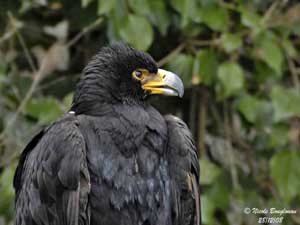
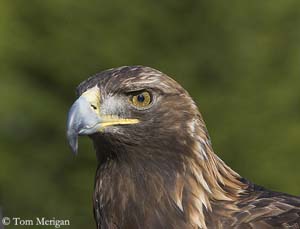
Aquila verreauxii
Aquila Chrysateos
Falcons, buzzards, hawks, and other medium-sized to large raptors have hooked bill, with bare cere often of different colour.
The cere is at the base of the upper mandible and is often yellow or grey. It is a bare, fleshy, waxy membrane which use in poorly known. Maybe only a flexible hinge?
The hook at the bill tip allows the bird to tear up pieces of carcasses or preys held with the talons.
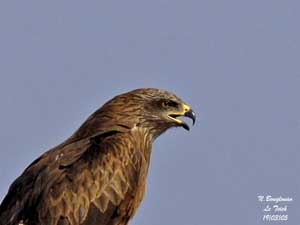
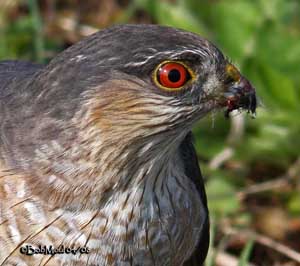
Accipiter striatus
Milvus migrans
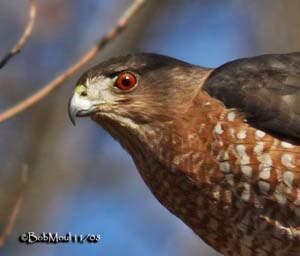
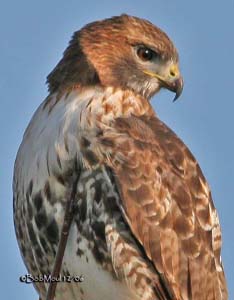
Buteo jamaicensis
Accipiter cooperii
We can see some difference in larger eagles. They have the same type of bill, but larger. The upper mandible may be longer too. They have powerful bill, fairly broad at base, with more or less broad gape.
Some kites have a “tooth” which may be useful for breaking the neck vertebrae of preys.
The Snail Kite has a greatly elongated and hooked upper mandible, used for extracting the snails from the shell.
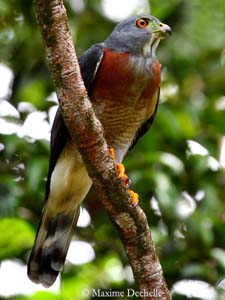
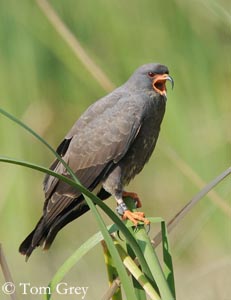
Rostrhamus sociabilis
Harpagus bidentatus
Honey-buzzards have scale-like feathers on the lores, in order to protect them against the stings of the wasps. The bill is hooked too.
Eagles have strong bill and large gape, allowing them to tier up pieces from large preys, and to swallow large bits of flesh.
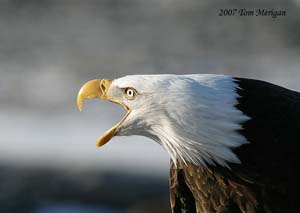
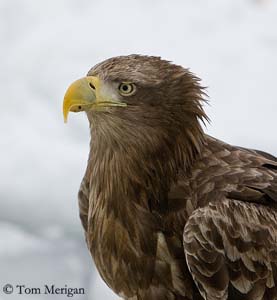
Haliaeetus leucocephalus
Haliaeetus albicilla
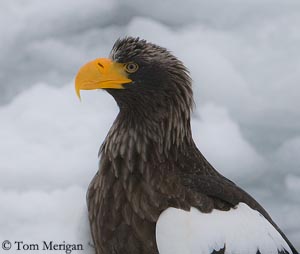
Haliaeetus pelagicus
Fish-eagles have very hooked bill. They fish with talons held forwards, and then, they tear up pieces from the dead fish with the bill.
The most powerful bill is that of Steller’s Sea-eagle. This eagle has very broad base and huge bill, giving an impression of great power in the mandibles.
Vultures have strong bill and often bare or downy head. They usually feed on carcasses, inserting the head into the dead body until the neck base. This bare skin allows them to clean easily the blood when bathing.
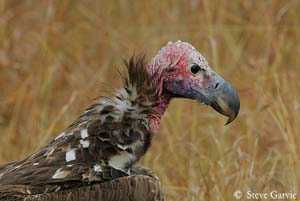
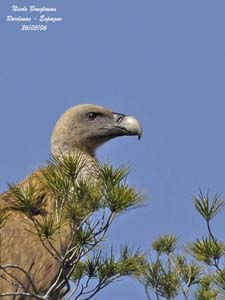
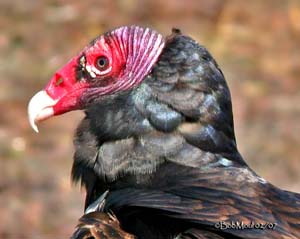
Gyps fulvus
Torgos tracheliotus
Cathartes aura
Some vultures such as the Egyptian Vulture have thinner bill. These vultures are able to open and to tear up hard skins of large carcasses, thanks to this type of bill.
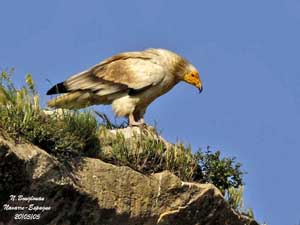
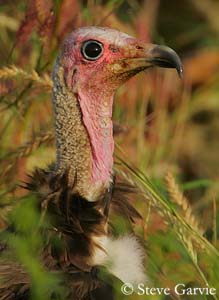
Necrosyrtes monachus
Neophron percnopterus
Each species takes a turn close to the carcasses. The bill and the size of the raptor establish the hierarchy around the food. Each one has a precise role and waits for its turn, but sometimes, some fight or intimidation displays occur…
This problem will be the subject of a next article!